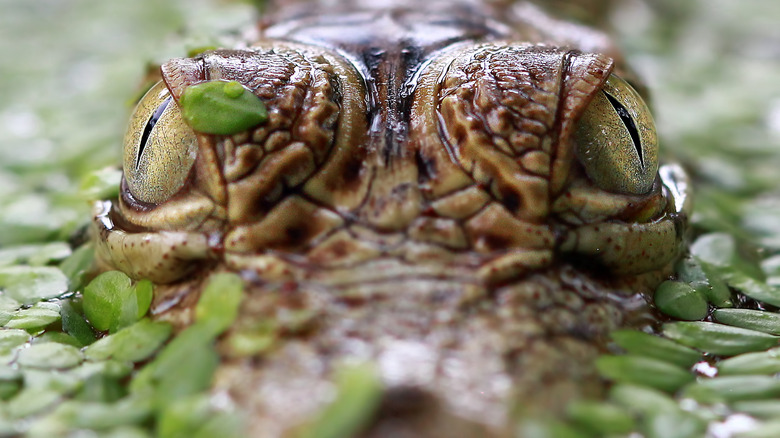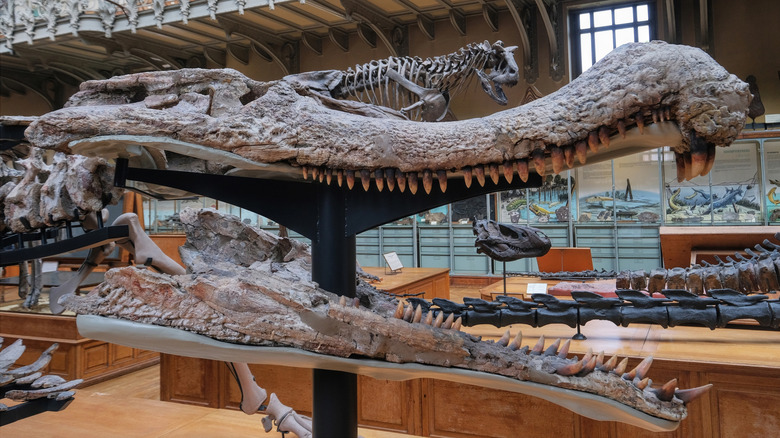The Largest Prehistoric Crocodile Ever Discovered Is Pure Nightmare Fuel
Not even Steve Irwin would want to take on the beast known as "super croc." Sarcosuchus imperator, as it is technically known, was a prehistoric reptile and a contender for the largest crocodilian in world history (it is only rivalled only by Deinosuchus and Purussarus, which were around the same size). Reaching up to 40 feet in length with a potential weight topping 17,000 pounds, Sarcosuchus imperator would make even the biggest crocodile in the world today look like a reptilian hobbit.
The key to Sarcosuchus imperator's incredible size was the fact that, unlike most other animals, these super crocs kept growing even after reaching adulthood. Cross-sections of Sarcosuchus fossils indicate that their bones grew continuously from birth all the way to death. This allowed them to reach sizes that are unattainable to modern crocodiles, which stop growing around the age of 10. The consensus amongst paleontologists is that Sarcosuchus imperator has no direct descendants still in existence, and that modern crocodiles descend from a different branch of the family tree.
Size isn't the only difference between today's crocs and the super crocs of old. Although Sarcosuchus had the basic body parts of a crocodile, they functioned a bit differently. They wouldn't have moved quite as smoothly because their spines were less flexible than modern crocodiles and the armored plates that covered their bodies were bigger. As with all prehistoric finds, much of their lives is shrouded in mystery, but the details scientists have uncovered reveal an apex predator unlike anything else.
The life of a super croc
Sarcosuchus imperator lived about 110 million years ago during the Cretaceous Period, the last of the three time periods in which the dinosaurs lived. Most of the Sarcosuchus fossils that have been uncovered were found in West Africa, in the Sahara Desert. Crocodiles living in the desert may sound bizarre, but in the time of Sarcosuchus, the Sahara had a tropical climate with a vast network of freshwater rivers. The only place that Sarcosuchus fossils have been found outside of Africa is in Brazil, a reminder of the age when Africa and South America were still conjoined.
Sarcosuchus' long jaw took up three-quarters of its skull. It had a large overbite, and the nose featured a bulbous protrusion, called a bulla, that has baffled paleontologists. Some believe that bullas enhanced the species' sense of smell. Other theories suggest that they were used like blunt weapons in combat, as a means of making noise, or as a feature to attract mates.
Sarcosuchus' diet was primarily fish, but based on its size and vicious jaws, there's a chance it ate dinosaurs from time to time. In a 2001 National Geographic special titled "SuperCroc," researchers tested the bite strength of modern crocodiles and scaled up the results for the size of Sarcosuchus. They estimated its bite force at 18,000 pounds, which means betting trapped between its jaws would be like having a fully-grown whale shark dropped on top of you. Maybe we should be relieved that Sarcosuchus isn't out there anymore.

